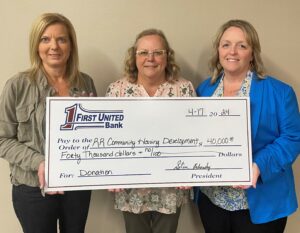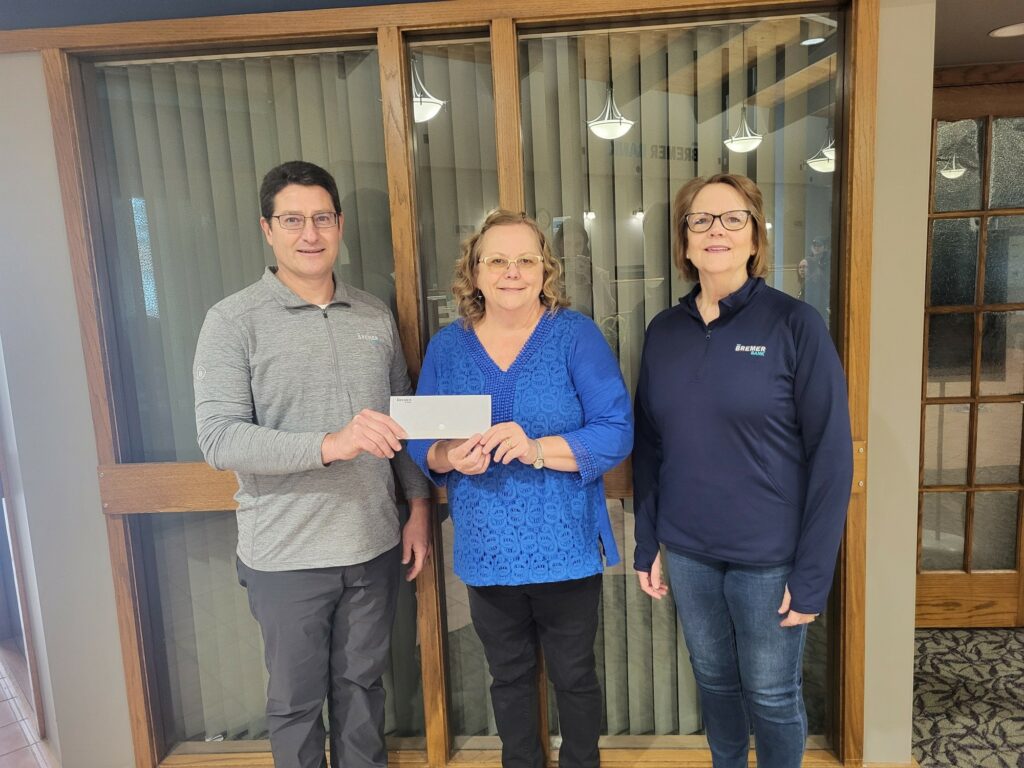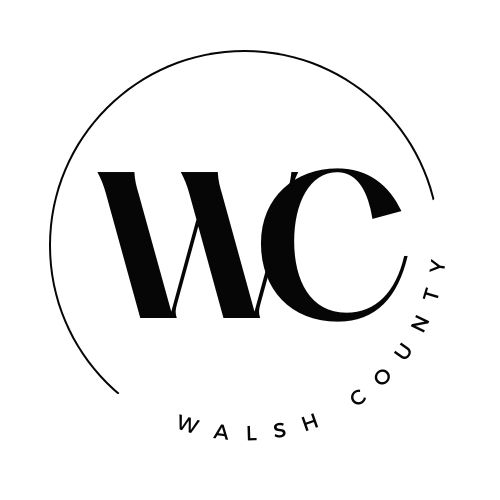WALSH COUNTY JOB DEVELOPMENT AUTHORITY
Mission Statement:
The mission of the Walsh County Job Development Authority is to promote existing businesses and to facilitate business expansions, as well as encourage new ideas and ventures that lead to job creation and increased incomes. This economic development includes enhancing human capital, developing community infrastructure, and promoting business development.
The Organization:
The Walsh County Job Development Authority (WCJDA) was formed in March 1988 through the efforts of community leaders and the Walsh County Commission. Funding for the organization comes largely from a county mill levy, and has expanded to include funds from loan repayments and grants from other entities. Resources primarily fund direct loans, interest buydowns, feasibility studies, and matching grants for businesses and community development projects. This includes regional efforts across Region 4 – Walsh, Pembina, Nelson and Grand Forks counties.
The Walsh County JDA focuses its efforts on economic and community development in Walsh County. The JDA works with individuals and local organizations to enhance economic/community development, assists entrepreneurs in Walsh County, identifies and coordinates financing of business start-ups and expansions from different public and private funding sources, and compiles information on communities, commercial buildings, and prospective businesses.
The organization is governed by a Board of Directors appointed by the Walsh County Commission. Board members and officers are elected according to requirements in the North Dakota Century Code specific to Job Development Authorities. The 12 members of the Board of Directors serve on staggered three-year terms or until their successors are duly qualified. The Board of Directors also oversees the operations of the WCJDA, monitors staff performance, and evaluates its investments in projects. The Board makes the final decisions on applications for funding.
An JDA application can be found by clicking this link:
WCJDA Application for Funds
Applications now being accepted for Walsh County Self Help program
Walsh County is currently accepting applications from cities for community betterment projects as part of the county’s Self-Help Program. The Walsh County Job Development Authority (JDA) manages the program on behalf of the county.
There are many ways communities can use these county funds for betterment projects. Examples of projects Walsh County communities have used the funds toward include maintenance and mowing at city park, street lighting repairs, maintenance equipment lease, and sidewalk and street repair.
The main objective of this program is to promote development within the communities of Walsh County. There are four program criteria:
- Requests cannot exceed one-half of the total project cost, nor can the request exceed $1,500.
- The county funds must be matched 1:1. Funds will be released on a reimbursement basis with supporting documentation, including itemized invoice and cancelled check.
- A copy of the resolution or minutes of the meeting when the applicant authorized the project must be included with the application. Please note: The City
must include in its minutes that it plans to apply for self-help funds for a specific project.
- Any change in scope of the awarded project or if a City would like to use funds for a different project than awarded, the change must first be approved by the County.
A fillable application form is available here: 2024 APPLICATION
Please complete the application and send it along with a copy of the minutes or resolution when the project was authorized via mail to the address above or via e-mail to Stacie@redriverrc.com.
Applications must be received by December 16, 2024, and will be presented to the Walsh County Commissioners for review and funding decisions in early 2025.
Also, if your city received 2023 self-help funds, you have until December 1, 2024, to submit your request for reimbursement to Walsh County Auditor Kristi Quibell. Any reimbursement requests received after that date may not be funded.
WCJDA IN THE NEWS
Walsh County Childcare Center receives donations from three local banks



First United Bank: Senior Vice President of First United Bank and WCJDA Board member Julie Byron, left, presents a check to WCJDA chairwoman Julie Gemmill, center, and JDA Director Stacie Sevigny for the Walsh County Childcare Center project.
Choice Bank: Walsh County JDA vice-chairman Greg Young, center, accepts a check from Choice Bank representatives, Denny Schneider, Business Development Officer, and Sondra Richardson, Client Services Supervisor. The donation and FHLB match will be used for the Walsh County Childcare Center project.
Bremer Bank: Russell Carignan, Market Leader, and Sally Ostenrude, right, Commercial Banking Associate at Bremer Bank, present a check to Julie Gemmill, WCJDA Board Chairwoman, for the Walsh County Childcare Center. The project will renovate an unoccupied 5,000 sq. ft. office building on Grafton’s main street into a turn-key childcare center.
MAY 2024-The recent generosity of three local banks is making a significant impact on the ability of the Walsh County Childcare Center project to move forward.
First United Bank, Choice Bank, and Bremer Bank all donated funds to the project to go toward construction, with a portion of their donations used as match for a Regional Workforce Impact Program grant that is expected to help cover the costs of a new air handling system in the renovated building. All three financial institutions are members of the Federal Home Loan Bank (FHLB) system and applied for the 3:1 matching FHLB Member Impact Fund.
The FHLB Member Impact Fund matched up to $3 for every $1 donated by a member bank to support community development projects, including childcare. Nearly $20 million was available to member banks in four states, including North Dakota. Donations from the local banks and the FHLB match provided a significant boost to the childcare project. Bank donations and FHLB match were as follows:
- First United Bank: $10,000 donation; $30,000 FHLB match = $40,000 total
- Choice Bank: $8,000 donation; $24,000 FHLB match = $32,000 total
- Bremer Bank: $5,000 donation; $15,000 FHLB match = $20,000 total
In total, the Walsh County Childcare Center project received $92,000 from the three local bank donations and FHLB match.
“These contributions will have an immeasurable impact on this important project,” said Walsh County JDA chairwoman Julie Gemmill. “The availability of quality childcare is a major barrier to workforce recruitment and retention and overall quality of life. We sincerely appreciate the generosity of these banks and appreciate them seizing the opportunity to apply for the FHLB Member Impact Fund.”
North Dakota received a total of $11.68 million of the $20 million available in FHLB funds for 80 projects supported with donations from 35 local banks that are members of the FHLB.
About the Project
The goal of the Walsh County Childcare Center project is to create a turn-key childcare facility to eliminate the overhead costs for a provider to operate from in order to increase the availability of quality childcare. Reducing the overhead costs will allow the provider to scale up her/his business, therefore creating additional childcare “slots”.
A Region 4 (Grand Forks, Nelson, Pembina, and Walsh counties) childcare provider survey conducted in the summer of 2022 found that 61% of 84 respondents indicated the lack of funds and a facility as major barriers to increasing childcare capacity. If an affordable facility were available, 25% of the providers said they would be interested in moving from a home or group license to a center license, therefore adding additional childcare slots.
Currently only one childcare provider is operating under a center license in Walsh County, which is Lil’ Spuds Childcare in Hoople.
The Walsh County JDA purchased the building in Grafton that will become the Walsh County Childcare Center. Once construction is complete, ownership of the building will be turned over to a non-profit, the Red River Community Housing Development Organization (CHDO). The CHDO board will oversee the building and charge rent to the provider.
The 5,000 sq. ft. building to be renovated is located at 817/819 Hill Avenue. The initial provider that will operate in the space has been identified. She is currently operating under a group license for up to 30 children. Moving into the Walsh County Childcare Center building will allow her to scale up her business over time to 55-65 children, therefore adding 25-35 much-needed childcare slots.
The business structure of this project aims to ensure the facility remains a childcare center long into the future, according to Gemmill. The building not being privately owned allows for another provider to operate from if the current identified provider were to leave childcare in the future.
Many partners have been identified for this project and have committed to helping solve the labor shortage and availability of childcare issues for the long-term. The support for this project began with a funding commitment from the Walsh County JDA board of directors and the development of a partnership with the City of Grafton, which has also committed cash/grant match and is covering the costs of utilities during development and construction. The JDA staff have continued to write and secure grants and built additional relationships — including with Marvin, Grafton’s largest employer — to bring this project forward.
About the Need
Walsh County is considered one of 15 “childcare deserts” or high need counties in North Dakota with only 29% of the needed childcare supply to meet demand. Childcare and housing are continuously noted as major barriers for local employers to attract and retain employees.
The Red River Regional Council (RRRC) led a business retention and expansion project in 2020-2021 which surveyed business owners and managers in Nelson, Pembina, Walsh, and rural Grand Forks counties. The lack of workforce was identified as one of the largest barriers to growth in Region 4. A total of 130 business owners or managers were interviewed via in-person surveys. Through that process, 90% of businesses shared growth plans — which is extremely positive — however a key barrier to that growth was lack of workforce. Unfortunately, lack of quality childcare options and housing availability are the main factors in the workforce shortage in our region.
A parental needs assessment/survey of the childcare issue was conducted in Region 4 in the summer of 2022. Those responses further illustrated the need for additional childcare capacity. Data collected from the survey includes:
- 556 respondents
- 79% noted work was affected when childcare arrangements fell through (missing work, arriving late, leaving early, and even bringing a child to work)
- 37% were on waitlists, with some noting waitlists up to three years
“Throughout the development of this project, we have heard many, many specific examples from our employers about potential employees unable to accept job offers and move to Walsh County due to the inability to find childcare,” said Stacie Sevigny, Walsh County JDA Executive Director. “The lack of childcare capacity is literally affecting every sector of our business community.”
That’s why donations from partners like First United Bank, Choice Bank, and Bremer Bank and the FHLB Member Impact Fund are so important, according to Sevigny.
“Renovating a former office building may seem simple enough,” Sevigny said. “But renovating an office building into a childcare center carries far more requirements than most people realize, especially considering there is a potential occupancy of 65 children plus staff.”
The project is currently out for bid and the Walsh County JDA is hopeful it has secured enough funding to award the project to a contractor in early June. If so, construction would be completed over the summer with the goal of the Walsh County Childcare Center to open this fall.
Current JDA Board Members and Representation
- Julie Gemmill, Chair, Member at Large (2026)
- Greg Young, Vice Chair, City Government Over 500 Population (2025)
- Jeane Flaten, Member at Large (2025)
- Terri Gorder, Member at Large (2026)
- Kyle Halvorson, City Government Over 500 Population (2026)
- Mary Houdek, ND Job Service (2025)
- Evan Koenig, City Government Under 500 Population (2024)
- Lucas Kelley, City Government Over 500 Population (2025)
- Dennis Markusen, Township Officer (2026)
- Jeff Moen, Township Officer (2024)
- Karen Anderson, Walsh County Commission (2024)
- Amy Suda, Walsh County Commission (2025)
- Julie Byron, Member at Large/Non-Voting (2025)
